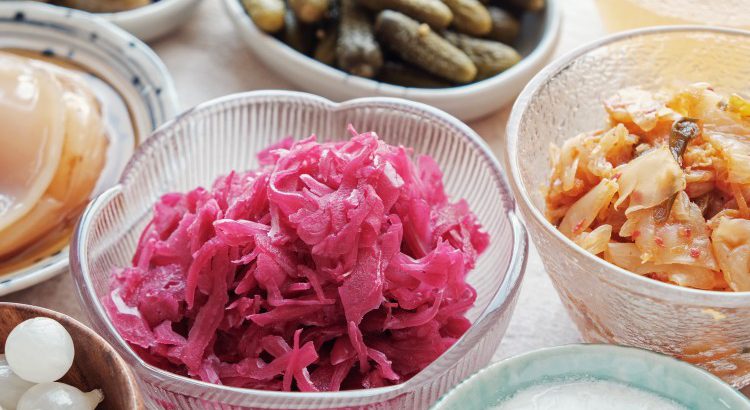Believe it or not, trillions of bacteria live in our digestive tract (our microbiota), and some species play a positive role in health.
Probiotics are live bacteria that can be found in certain foods as well as supplements. When we ingest these beneficial bacteria, they survive in our gut and can provide health benefits.
Prebiotics are food sources for the bacteria in our gut and come mostly from fiber. Our digestive tract cannot break down the fiber, but the beneficial bacteria in our colon can, and it helps them to thrive.
Food Sources with Probiotics:
- Yogurt with live or active cultures (not all yogurt has this, so read your label!)
- Sauerkraut (unpasteurized)
- Tempeh – fermented soybeans
- Kimchi – a fermented spicy Korean side dish made from cabbage
- Miso – A Japanese seasoning often used in soup; comes in many varieties
- Kefir – A fermented milk drink that has more probiotics than yogurt
- Pickles or other pickled veggies (unpasteurized)
You can also purchase probiotic supplements, although they tend to be pricey. Look for the USP or NSF seal to ensure your supplement includes what is on the label. Make sure to talk to a healthcare professional before taking any supplement.
Food Sources High in Prebiotics:
- Oats
- Legumes, beans and peas
- Berries
- Bananas
- Asparagus
- Jerusalem artichokes
- Dandelion greens
- Garlic
- Leeks
- Onions
Studies show that having a wide variety of beneficial gut bacteria can help to improve immune function, improve symptoms of depression, reduce inflammation in the colon (with the potential to reduce risk of cancer) and can aid in prevention of obesity.
Bridgette Bostic, R.D.N., is the community nutrition educator in the Tevis Center for Wellness.
